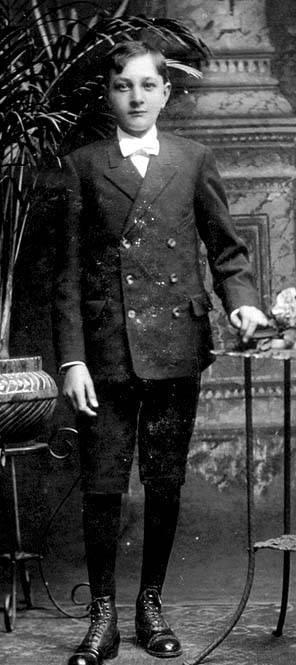|
THE SPANISH FLU PANDEMIC OF 1918
Just over 80 years ago, early in the morning on March 11, 1918, the company cook reported to the Army hospital at Fort Riley, Kansas. The young private's complaints were unremarkable; fever, sore throat & headache. What was remarkable was what followed. By noon that same day, Fort Riley's hospital had 107 cases and two days later, 522. That spring Fort Riley lost 48 young men to a scourge that came to be known as The Spanish Flu. The Spanish Flu of 1918 was truly a pandemic with an estimate that more than 20 million people died worldwide with 600,000 of these being Americans. Although this outbreak ranks with the Plague of Justinian and the "Black Death" as one of the most disastrous diseases in history, it is barely remembered 80 years later. One can only speculate that the horrors of WWI overshadowed the disease despite the fact that more Americans were killed by the Spanish Flu than all the combat deaths of this century combined. America in 1918 was a nation at war. Thus when this killer flu arrived, policy-makers were faced with two challenges in direct conflict with each other. The influenza pandemic demanded that public life should be shut down while the war effort dictated just the opposite. The incredible speed that this disease moved through populated areas probably contributed to the lack of action by authorities. The reports singing across the telegraph and telephone wires of America were simply unbelievable. As a result, the war effort, with its draft call-ups, bond drives, factory production and troop shipments, continued virtually unabated. While manifesting the ordinary symptoms of influenza, the Spanish Flu included complications such as severe pneumonia, bronchitis and heart problems. People could be healthy in the morning and dead by nightfall. Others died more slowly, suffocating from the buildup of liquid in their lungs. Despite the currently favored theory that the disease started in the United States and spread to the rest of the world via American troops going to Europe, the influenza outbreak was called the Spanish Flu. Spain had suffered a devastating eruption of influenza in May and June of 1918. While news of the disease ravaging their own population was suppressed by the actual belligerents of WWI, Spain was not involved in the war and, as a result, did not censor the news of the deadly epidemic. As far as the public could determine, this deadly affliction had originated in Spain. At least 25% of all Americans contracted the Spanish Flu. October 1918 was the worst month for America with 195,000 people actually dying from the disease or its complications. There was a nationwide shortage of caskets. Trucks drove the streets of large cities, picking up caskets and bodies. Some U. S. Army posts were reporting a death every hour. The disease occurred frequently in children from age 5 to 14; however, persons between 20 and 40 years of age were the most likely to die from it. Surgeon General of the Army, Dr. Victor Vaughn, reached a terrifying conclusion. "If the epidemic continues its mathematical rate of acceleration, civilization could easily disappear from the face of the earth within a few weeks." Then, as suddenly as it had started, the flu began to vanish. By mid-November the number of dead Americans was plunging. Scientists now know that radical genetic mutation, called antigenic shift, accounts for the appearance of new viral subtypes. These new viruses originate in ducks, chickens, pigs and other animals which act as reservoirs of influenza. When these viruses mutate and then pass to the environment, humans are susceptible to infection. The strain that caused the 1918 pandemic was found inside of pigs, hence the label "swine flu". Today, many influenza's originate in Asia, where enormous numbers of ducks, pigs and other virus-producing animals live in close proximity to human beings. Otto W. Boseker, son of William G. & Sophia (Norwold) Boseker and grandson of the immigrant Johannes Boßecker, enlisted in the Army in late July of 1918. The photograph of Otto on the cover of this issue was taken at his Confirmation. Otto W. Boseker was a classic victim of the Spanish Flu, an American soldier in the prime of his life. He died at Fort Knox, Kentucky of flu-induced pneumonia on 20 Oct 1918 at the age of 27 years and 7 days. THIS ISSUE'S CENTERFOLD
This issue's centerfold has part 2 of the first 3 generations
of the Johannes Boßecker family. As mentioned in the last
issue, due to the size of Johannes's family, Johannes's 14 children
are spread over 2 issues. MORE VETERANS Here are more Boßecker descendant veterans that have been documented since the last issue. Another female veteran is listed here and she is the earliest known female veteran.
Jean A. Wilson [Born: ?]
Doris M. (Deahl) Wilson [Born: 1920]
Timothy Templeton [Born: 30 Apr 1940] NEW ARRIVALS! Claire L. Saniel-Banrey, GGGG-Granddaughter of Karl Boßecker, was born on 20 Mar 1998 at Columbus, OH. MARRIAGES! Taya Kimberly Bosecker, GGG-Granddaughter of Karl Boßecker, married Brendan Jean Sheppard on 20 Jun 1998. Todd Alan Riggs, GGG-Grandson of Karl Boßecker, married Shawna Kuester on 27 Jun 1998. IN MEMORY OF...
Walter Christian Friedrich Bosecker
Ruth (Leibenguth) Bosecker
Nora Irene (Rice) Shaefer ERRATUM The last issue was labeled the SPRING 1997 issue; it should have been labeled the SPRING 1998 issue.
|
